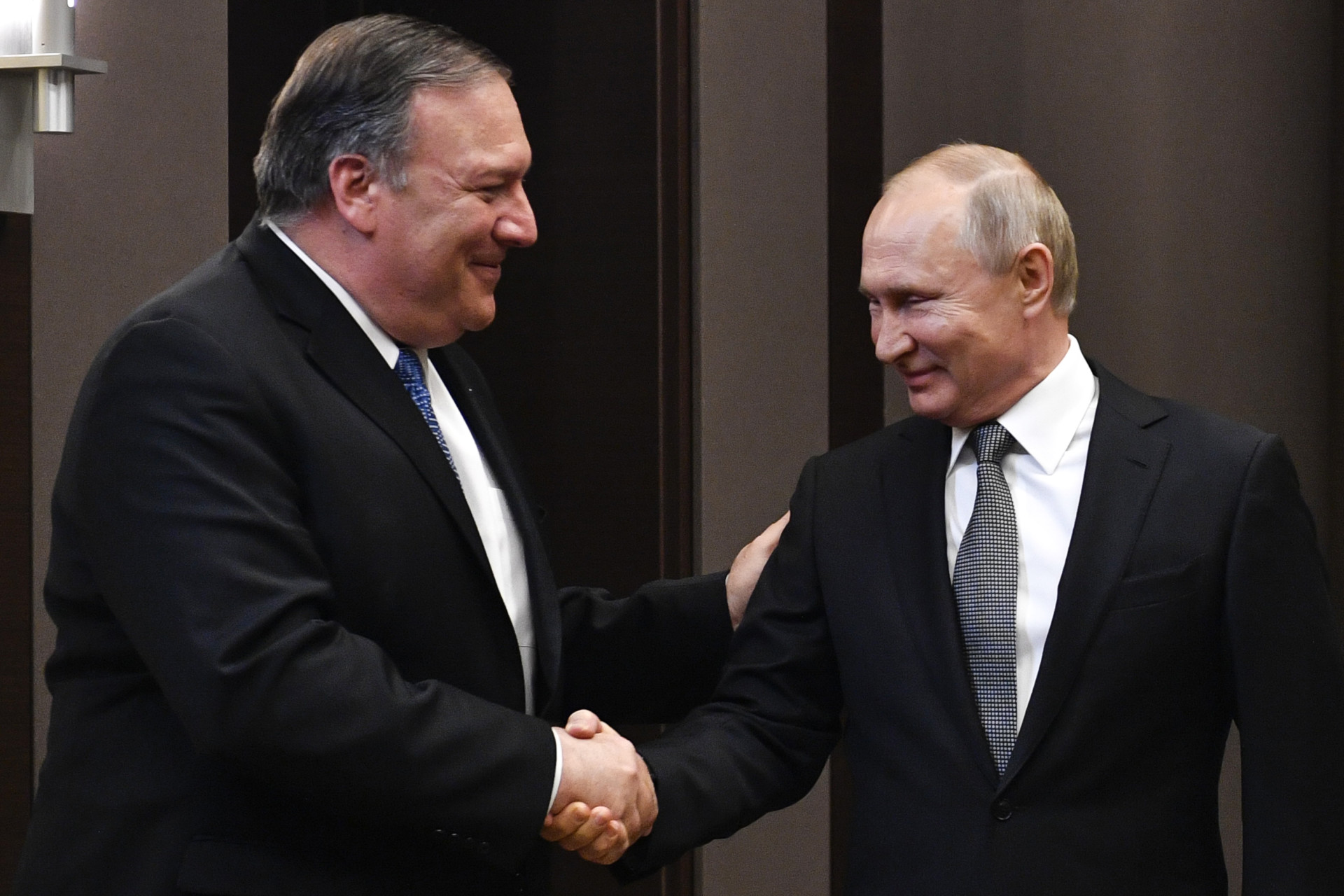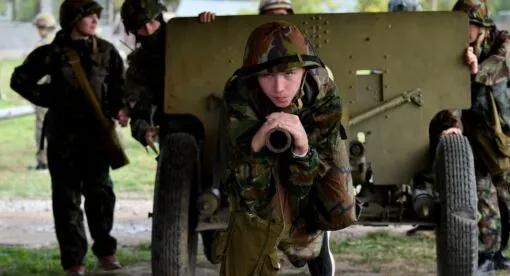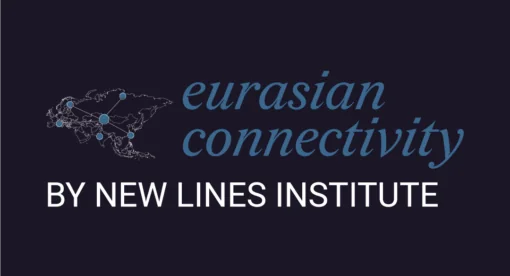The standoff between the United States and Russia has been a key feature of the global system, and is likely to become even more prominent with a new U.S. administration set to take the helm in 2021. Because of the global and intersectional nature of the standoff – which spans everything from the former Soviet periphery to the Middle East to arms control arrangements – the evolution of the relationship between Washington and Moscow has important implications across the world. But while the countries have many conflicting interests and overlapping spheres of influence, there are nevertheless key areas of mutual interest – most notably containing the rise of China – that warrant greater cooperation in the future. It is ultimately in the U.S. strategic interest to balance Russia and China to prevent greater alignment between the two.
Background
There are deeply ingrained drivers in the standoff between the United States and Russia that go back to the Cold War era. The end of World War II created a bipolar world in which the United States and Soviet Union were the two primary global powers vying for influence across the world’s political, economic, and security spheres. The Soviet Union’s collapse in 1991 made the United States the undisputed global superpower, though Russia eventually re-emerged as a major regional power in the 2000s on the back of high global energy prices and a stabilized political system under Vladimir Putin. Russia regained much of its influence across the former Soviet periphery, punctuated by its swift military victory over the Western-oriented Georgia in 2008, and Moscow has returned to posing a challenge (albeit more limited than before) to Washington and its Western alliance system.

Tensions between the two fundamentally come down to a clash in many of their strategic interests. Washington wants to prevent the rise of a major power in the Eurasian landmass that can serve as a regional or global hegemony and challenge U.S. dominance and thus has challenged the rise of Russia directly with economic tools like sanctions and in the security sphere through military buildups and NATO expansion (this same interest can be applied to the U.S. challenge against the rise of China, albeit in different forms). The United States has also supported pro-Western movements and governments in the former Soviet periphery, as can be seen in Ukraine, Georgia, and the Baltic states, which can be interpreted as a modern version of the Cold War-era strategy to contain what was then the Soviet Union.
Russia’s primary strategic interest, due to its exposed geography and lack of natural barriers, is to establish buffer space around the Moscow-St. Petersburg core and push outward to Eastern Europe, the Caucasus, and Central Asia in order to achieve defense anchors against potential enemies. When Russia has been able to establish such anchors successfully (such as in the Soviet period), Moscow has pushed out beyond these areas to expand its global political, economic, and security influence. When Russia is weak (such as in the 1990s post-Soviet collapse), Moscow has lost these buffers and is forced inward to concentrate on the home front. Currently, Russia is in between these two extremes, playing the role of a regional power in Eurasia with influence and operations in select areas beyond the former Soviet periphery.
Russia’s interest is also to challenge the U.S.-led world order and Washington’s efforts to promote democracy, human rights, and regime change in states around the world – an interest Moscow currently shares with China, driving closer alignment between the two countries. This interest in opposing U.S. interventions and regime change efforts is strong, especially where Moscow has direct military or economic interests, and Russia has utilized a number of different economic, security, and political tools in doing so.
Areas of Conflicting and Overlapping Interests

A key example of tensions arising because of conflicting U.S. and Russian interests can be found in Ukraine. The pro-Western EuroMaidan revolution in Ukraine in February 2014, which overthrew a Russian-backed government in Kiev, catalyzed a prolonged standoff between Washington and Moscow, bringing U.S.-Russian relations to their lowest point since the end of the Cold War. Russia’s subsequent annexation of Crimea and support for a separatist rebellion in Eastern Ukraine triggered U.S. and EU sanctions against Moscow and sparked a major military buildup by both NATO and Russian forces throughout the European borderlands.
The United States and Russia have also been on opposing sides of the recent political upheaval in Belarus following the country’s controversial presidential election in August. While Moscow has been firm in its backing of embattled president Alexander Lukashenko, Russia’s sole remaining ally in Eastern Europe, Washington has refused to recognize his victory and has instead supported the opposition led by Sviatlana Tsikhanouskaya. The United States has floated the potential of sanctions against Belarus, just as the Kremlin has offered increased economic assistance to Minsk. Moscow has also raised the prospect of a security intervention in Belarus in the event of ongoing protests getting out of control, something that would certainly lead to an intensification of U.S. sanctions against Russia and potentially even more military buildups between the two countries.
As the United States has maintained and steadily increased economic and security pressure against Russia over the past six years, Moscow has as a result pursued a structural repositioning of its foreign policy away from the West and toward the East. This has included an expansion of already growing economic and security ties with China, as well as a deepening involvement in areas of strategic interest to the United States, particularly in the Middle East, but also elsewhere around the world.
Russia’s military intervention in the Syrian conflict on the side of the Assad regime can be seen as a key component of this shift. The Kremlin had several motives for its involvement in Syria. According to the Kremlin’s official account, Russia was concerned about the proliferation and spillover of Islamist militant groups like ISIS onto its own territory. But more importantly, Moscow wanted to preserve its existing military assets in Syria, like the Tartus naval base, to bolster support for a longtime ally of Moscow in the Syrian regime, and to gain leverage against Washington in what was bound to become a prolonged standoff. Notably, the grounds for Russia’s intervention in Syria resembled that of its actions in Ukraine in important ways. As with the overthrow of the Ukrainian government led by Viktor Yanukovych, a Syrian government led by Bashar al-Assad, which Moscow viewed as legitimate, came under attack from Western-backed opposition and Islamists, which Moscow viewed as illegitimate. In this sense, Russia challenged the rationale behind U.S. actions in these theaters based in part on promoting democracy and human rights, and Moscow adapted (or rather refined) a de facto doctrine of direct involvement against U.S.-backed efforts at regime change in foreign countries.
Russia has subsequently applied this doctrine in other areas outside of the region, notably in Venezuela. As the United States pressured Venezuelan President Nicolas Maduro in recent years through sanctions and support of the country’s political opposition, Russia increased its economic and security support for the Maduro regime. Moscow had many reasons for this intervention, including gaining leverage over the United States, protecting Russian energy assets in Venezuela, and helping Maduro’s regime fight U.S.-supported opposition forces.
Moscow has increased its activities in other theaters as well. This has included diplomatic mediation between the Taliban and the Afghan government (as well as allegations of supplying weapons to the Taliban), and signing a whole host of military-technical agreements in Africa. Russia has also increased its propaganda, disinformation, and cyberwarfare tactics to sow chaos and foster political polarization across the West, including in the United States itself.
Washington has, meanwhile, ratcheted up pressure on Moscow in the form of further expanding sanctions and increasing military support to anti-Russian allies. In the context of military buildups by Russia and China’s growing military sophistication, the United States has also left arms control pacts with Russia like the INF (Intermediate-range Nuclear Forces) treaty and may do so again with the New START treaty, which expires in 2021.

Despite these many areas of conflicting interests, there are also important areas of mutual interest between the two countries. One area that has long proven to be a driver of cooperation is transnational terrorism, with both countries facing a threat from groups like al Qaeda and the Islamic State. Russia was one of the first countries to support the United States following the Sept. 11 attacks, with Moscow proving instrumental as a facilitator of U.S. and NATO operations in Afghanistan via the Northern Distribution Network through Russian and former Soviet territory. While this logistical arrangement eventually broke down due to political tensions and what Moscow deemed to be overreach by Washington in Central Asia, it nevertheless pointed to an area of shared interest to combat transnational terrorism that endures in various forms to this day.
More recently, the COVID-19 pandemic also highlighted the potential for cooperation between the United States and Russia. In April, reports emerged that the United States had received a shipment of ventilators from Russia’s KRET tech firm, a subsidiary of Russian conglomerate Rostec, which is subject to U.S. sanctions. Following a direct phone call between U.S. President Donald Trump and Putin, there was an agreement for the United States to purchase these ventilators directly from the Russian government in order to circumvent the sanctioned company. This showed Washington’s willingness to be more flexible on its sanctions policy vis-a-vis Russia when it was in the national interest, and in a broader sense could point to the potential for increased collaboration between the two countries in areas of mutual interest such as public health despite apparent obstacles.
In the longer term, perhaps the greatest area of mutual interest concerns China. While Beijing represents an important economic and security partner for Russia in the current environment, it nevertheless poses a longer-term threat to Moscow in several areas, including in Central Asia, Eastern Siberia, and the Arctic. This is especially the case if Chinese power and influence continues to grow in these areas via the Belt and Road Initiative and other strategic projects, just as Moscow’s own ability to project power could be compromised down the line due to Russia’s structural economic weaknesses and looming demographic decline. Thus, the rise of China could become just as problematic for Russia in the future as it currently is for the United States.
Policy Recommendations
While the current global environment – including the COVID-19 pandemic and the associated global recession, as well as the rise of China – presents Washington with many challenges, it conversely provides opportunities to improve ties with Russia in line with U.S. strategic interest. In the short term, the standoff with Russia is unlikely to go away, and indeed, Russian meddling in U.S. elections – whether via cyber attacks or disinformation tactics – can be expected to complicate ties between Moscow and Washington even further. In addition, the United States’ nationalistic approach and inward turn in recent years – which has included drawing down troops from various theaters like Syria and Afghanistan – have only served to embolden Russia.
However, such recent developments do not need to disrupt the broader strategic picture of the threat environment that the United States faces. Indeed, in the longer term, a more powerful and assertive China is likely in a better position to fill power vacuums left by the United States than is Russia and could, among other factors, lead to a reversal of the United States’ inward turn. The question is whether Washington will recognize this emerging correlation of geopolitical forces now, in its earlier stages, or when it matures further and is perhaps too late. The U.S. strategy should thus be to mitigate the disruptive elements of the standoff with Russia while trying to enlist Russian cooperation in areas of mutual interest between the two countries to address the various challenges they both face.
Economic sanctions and military/security buildups have been the primary tools for the United States to challenge Russia in their standoff. These tools should continue to be used, but their severity should depend on the degree to which Moscow is willing to collaborate with Washington, which in turn is partially dependent on the domestic economic and political situation in Russia. For example, U.S. sanctions, which so far have not been a major deterrent to Russian behavior, could become more potent during a deep, prolonged economic crisis. Depending on the extent of the economic pain Russia experiences – particularly in its energy sector, with the fall in global oil prices even more damaging to the Russian economy than sanctions and the long-term outlook potentially compromised by a shift toward renewable energy – Moscow could be willing to make further adjustments to its operations in Ukraine, Syria, Venezuela, and other theaters detrimental to U.S. interests in order to avoid further sanctions. However, it should be noted that Russia has up to now only increased its activities and operations abroad as U.S. sanctions have grown.

Washington could also leverage any changes in sanctions or its security posture vis-a-vis Russia when it comes to China. The deeply ingrained standoff between Washington and Beijing – which has been exacerbated by the origination of COVID-19 in China and U.S. criticism of Beijing’s treatment of Uyghurs in Xinjiang – has sparked a re-evaluation of U.S.-China ties, from technology to educational exchanges to supply chains. Further erosion of trade ties between the United States and China could exacerbate geopolitical tensions between the two countries in sensitive areas like Hong Kong and the South China Sea and make Russia increasingly important to the United States as a counterweight to China.
This, in turn, could lead to a re-evaluation of the strengthening of the Russia-China axis, which is one of the most significant geopolitical threats the United States currently faces. Of course, Russia is unlikely to abandon its cooperation with China completely in the near to mid term, and Beijing will try to maintain strong ties with Moscow in the face of growing friction with Washington. However, Moscow’s calculus could change as its economic challenges pile up and Beijing’s ability to project power in overlapping spheres of influence grows. A weaker economic outlook, combined with mutual interests in areas like countering transitional terrorism, could thus pave the way for cooperation between Washington and Moscow in unforeseen areas.
Therefore, while the current situation certainly brings its fair share of challenges for the United States, a longer-term outlook rooted in Washington’s geopolitical imperatives offers opportunities to decrease tensions and increase cooperation with Russia while simultaneously improving its strategic position relative to China.
Eugene Chausovsky is a Nonresident Fellow with the Newlines Institute. Previously, he served as Senior Eurasia Analyst at Stratfor for 10 years. His work focuses on political, economic, and security issues pertaining to the former Soviet Union, Europe, and Latin America. He Tweets at @EugeneChausovsk.
The views expressed in this article are those of the author and not an official policy or position of the Newlines Institute.







